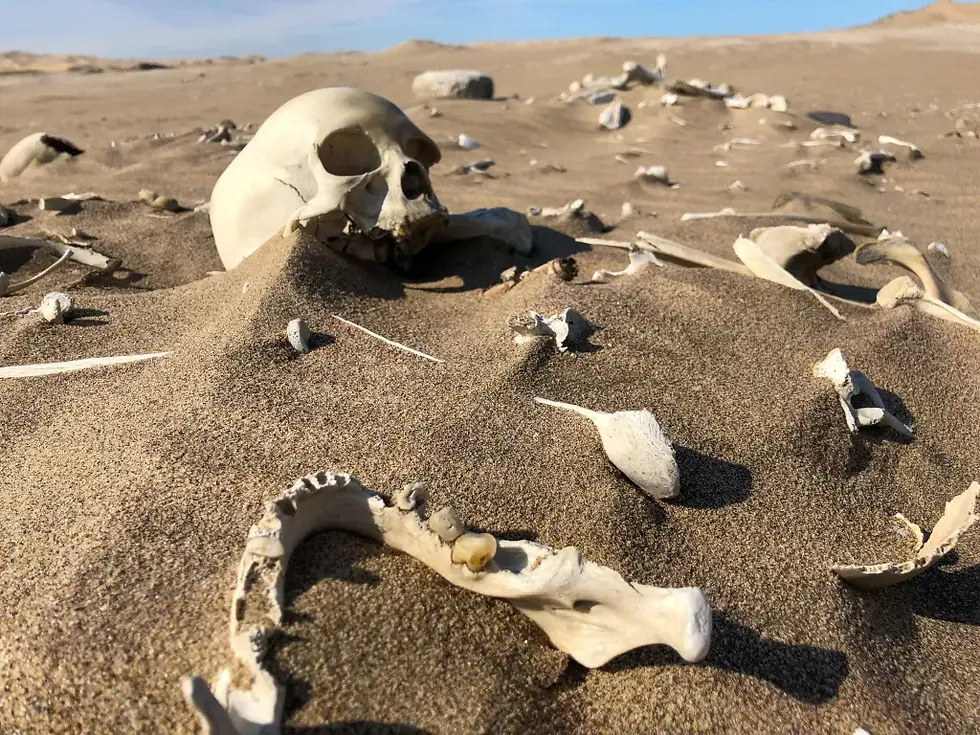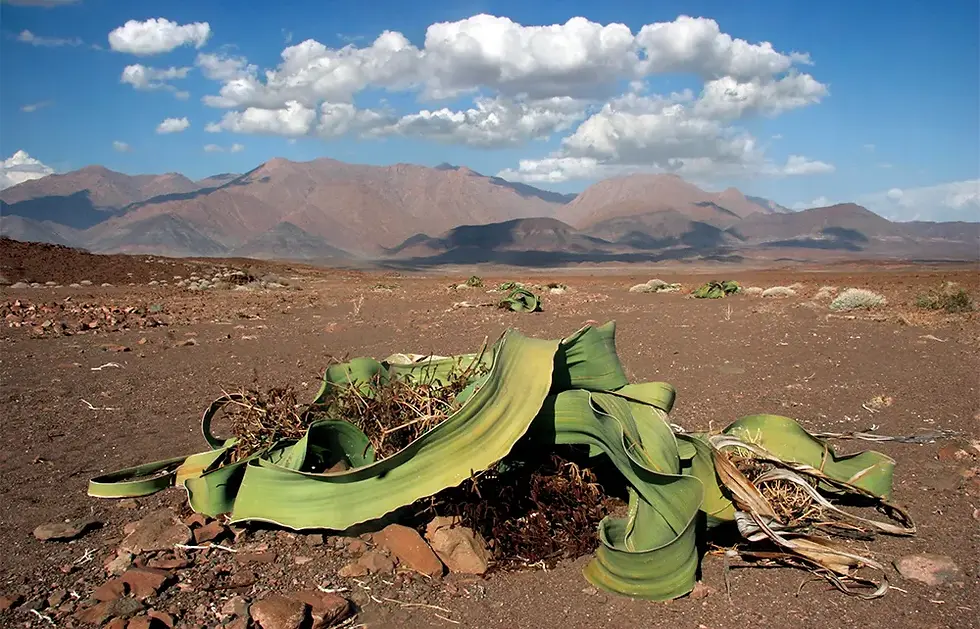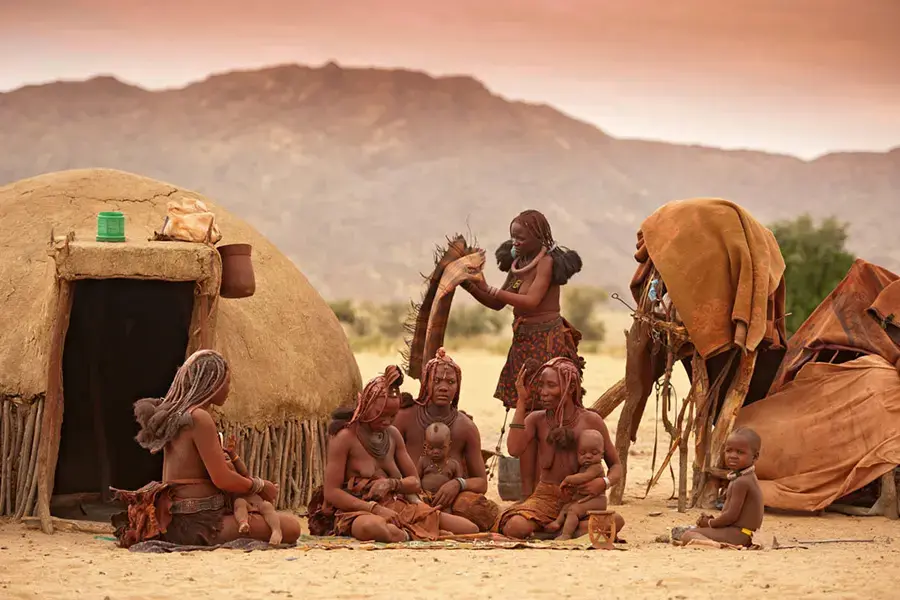Skeleton Coast: Hauntingly Beautiful
- Hellen M.
- May 13
- 3 min read
Updated: May 14

Located in the north western part of the Atlantic Coast of Namibia, the Skeleton Coast is a place of stark contrasts and silent mystery. Formerly called by the indigenous San people (formerly known as Bushmen) "The Land God Made in Anger" and by Portuguese sailors "The Gates of Hell," the Skeleton Coast has evoked both awe and fear in many. However, for those who seek thrilling adventure, this place offers the most surreal and otherworldly scenery on Earth.
In this post, we’ll uncover this places:
Haunting History

The name “Skeleton Coast” was coined due to the bones that lined the beaches as a result of whaling operations and seal hunts. A few of the skeletons were of sailors who were shipwrecked, and walked through the desert in search of food and water, just to die slowly in the scorching Namib Desert behind the coast.

Notable wrecks like the Eduard Bohlen, a 95 meter ship that lost its way and ran aground at Conception Bay, still lie eerily inland, slowly swallowed by sand — a surreal sight that tells of nature’s dominance.
Rare Desert-Adapted Wildlife
Despite its extreme climate, the Skeleton Coast is alive with unexpected biodiversity.
Elephants

Unlike their savannah cousins, desert elephants have adapted to survive in one of the harshest environments on Earth. These elephants have longer legs and larger feet, allowing them to traverse sandy terrain with ease. They travel great distances in search of water, making their tracking both challenging and thrilling.
Lions

There are records of lions inhabiting the northern Namib desert along the Skeleton Coast in Namibia as far back as 1934. Namibia is the only country in the world where lions have adapted to desert conditions and walk to the beach to prey on seals. Sometimes dragging their catch up to three kilometres inland to feed their cubs.
Hyenas

Specifically brown hyenas are desert adapted wildlife in The Skeleton Coast. To see a brown hyaena is truly special. As secretive, solitary scavengers mostly active at night, the only signs they leave behind for the morning light are footprints.
Other animals include:


Vegetation like:


Survive off morning fog, a vital lifeline in a land with almost no rainfall.
Must See Landmarks
Cape Cross Seal Colony

The colony of Cape fur seals at Cape Cross marks the spot where the first European explorer set foot on the coast of Namibia in 1486. Attracted by the good fishing provided by the nutrient-rich waters of the Benguela current, the seals congregate on the rocky shoreline year-round, with bull seals arriving in large numbers towards the end of October, ready to fight for their territories and the right to mate with a harem of up to 60 females.
Ill-Fated Shipwrecks

A unique combination of the cold Benguela current meeting hot desert winds, combines to make this one of the foggiest places on earth. Add in lots of underwater rocks and sand bars, and you have a recipe for maritime disaster. The mists of course give life to this coastline – in the almost total absence of rainfall, they bring essential moisture – but they have also spelled doom for hundreds of ships of all kinds, from wooden treasure ships to modern day trawlers.
Himba Villages

An extremely photogenic minority people in Namibia, the Himba largely occupy remote, arid areas of Kaokoland (areas of Damaraland and the Skeleton Coast). Himba women are instantly identifiable through the ochre that hardens their hair, creating vivid colors and striking shapes. Both men and women wear minimal clothes, adorned with tribal jewelry and trinkets. Living in small domed huts made from mud and grass, the women breed cattle and goats while caring for the children, whereas men are more involved in socio-political activities.
Practical Tips for Travelers
When to go?
June to October (cooler, drier weather)
Where to stay?
Shipwreck Lodge, Hoanib Valley Camp, or guided camping trips.
What is needed?
A Guide because much of the region is closed to self-drivers.
Permits which are required to enter Skeleton Coast National Park.
Warm Layers because fog and wind make the coast chilly, especially at night.
A Good Camera to take pictures of the visually stunning landscapes.
The Skeleton Coast is more than just a destination — it’s an experience in elemental contrast: land and sea, life and decay, silence and wind. It’s Namibia’s wild frontier, and for the curious traveler, it offers awe in its purest form.
Would you explore this part of the world? Reach out to us and let us know.




Comments